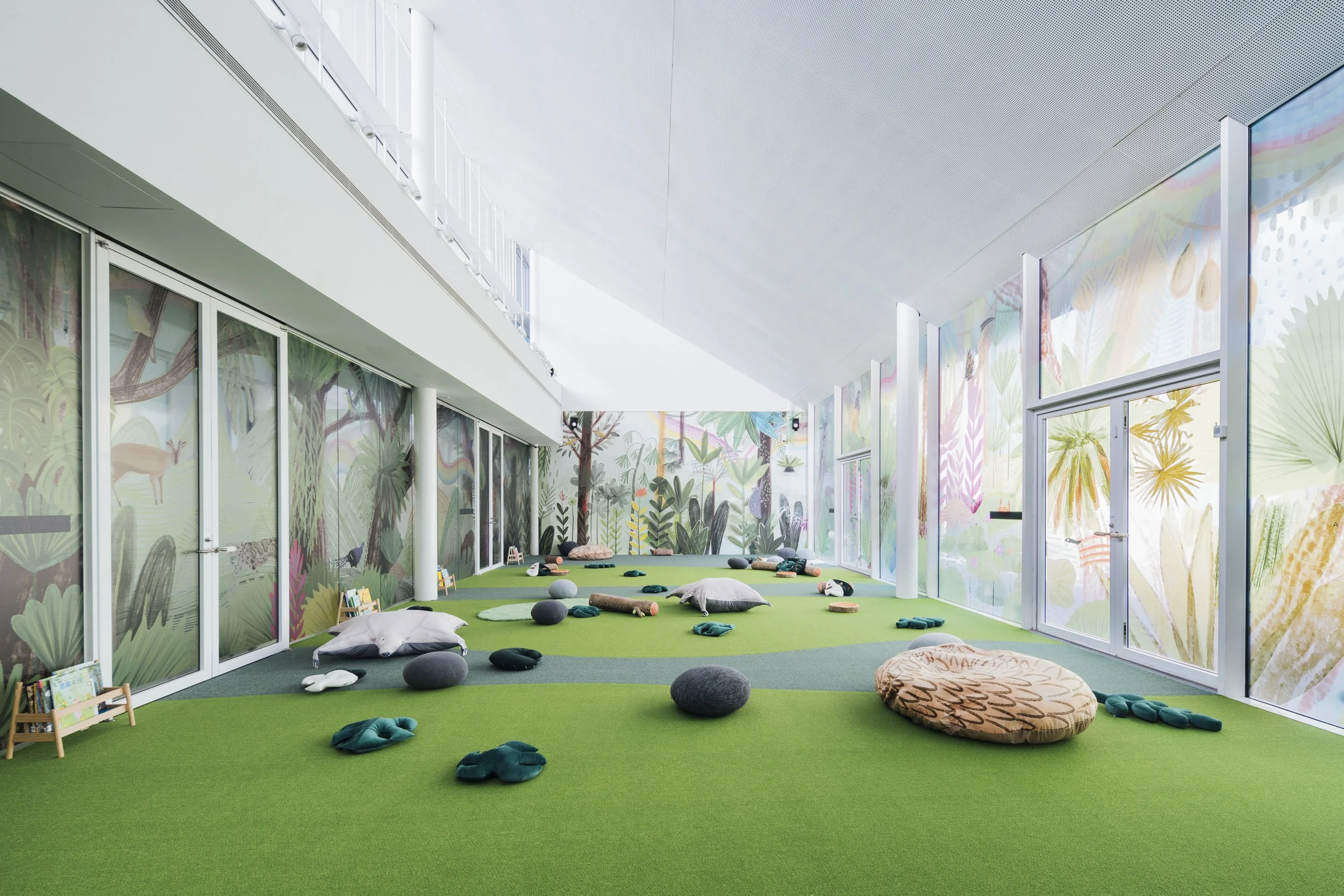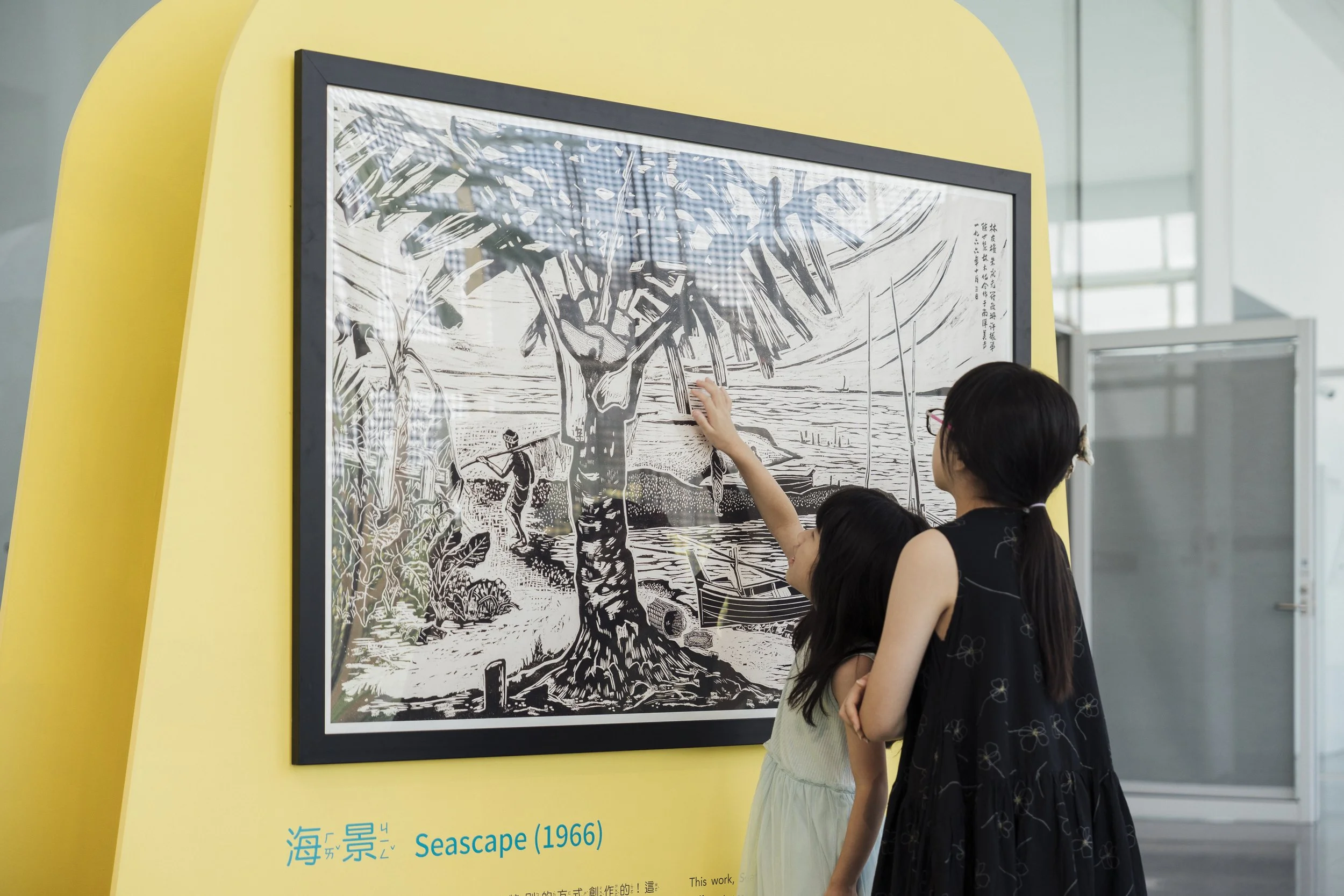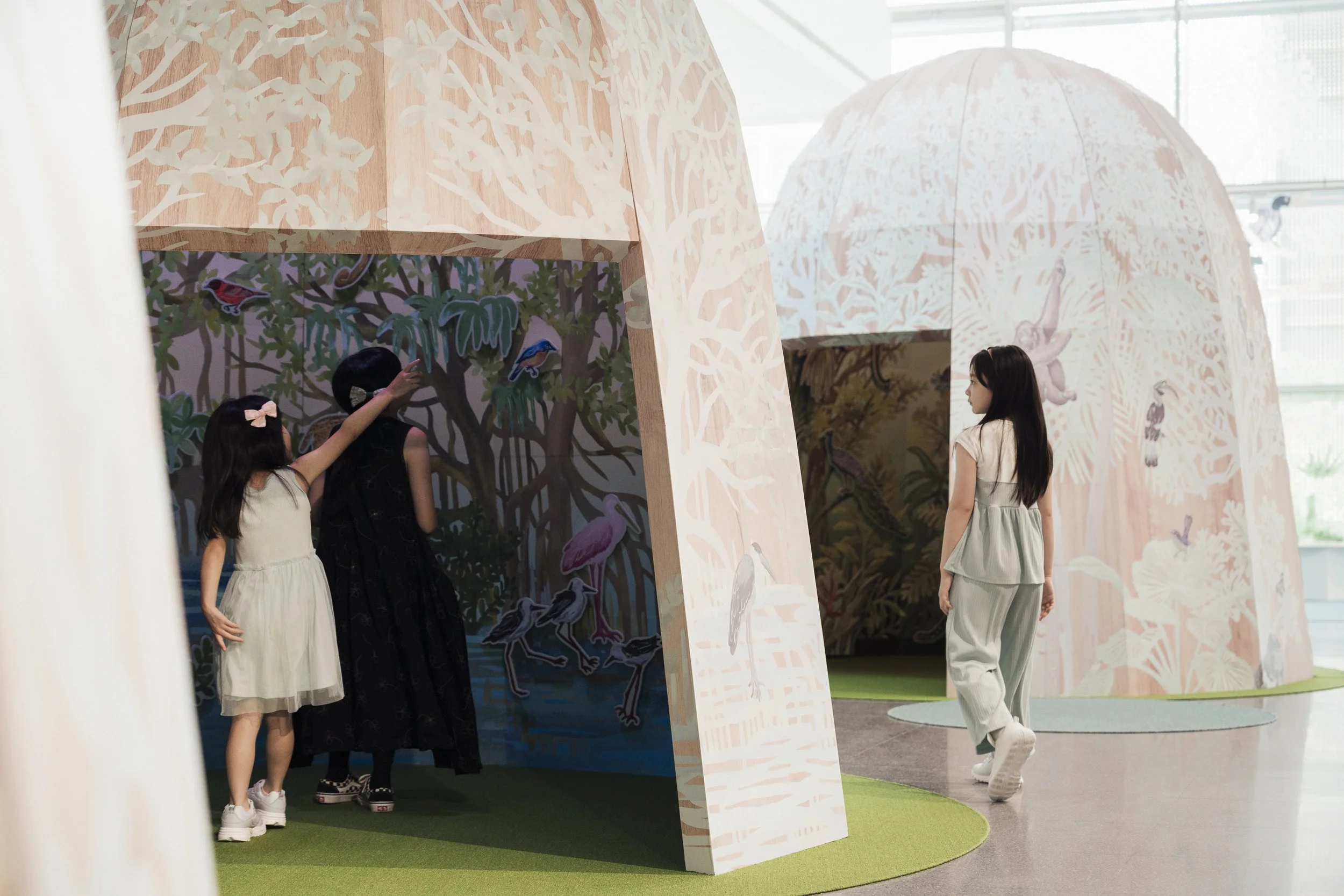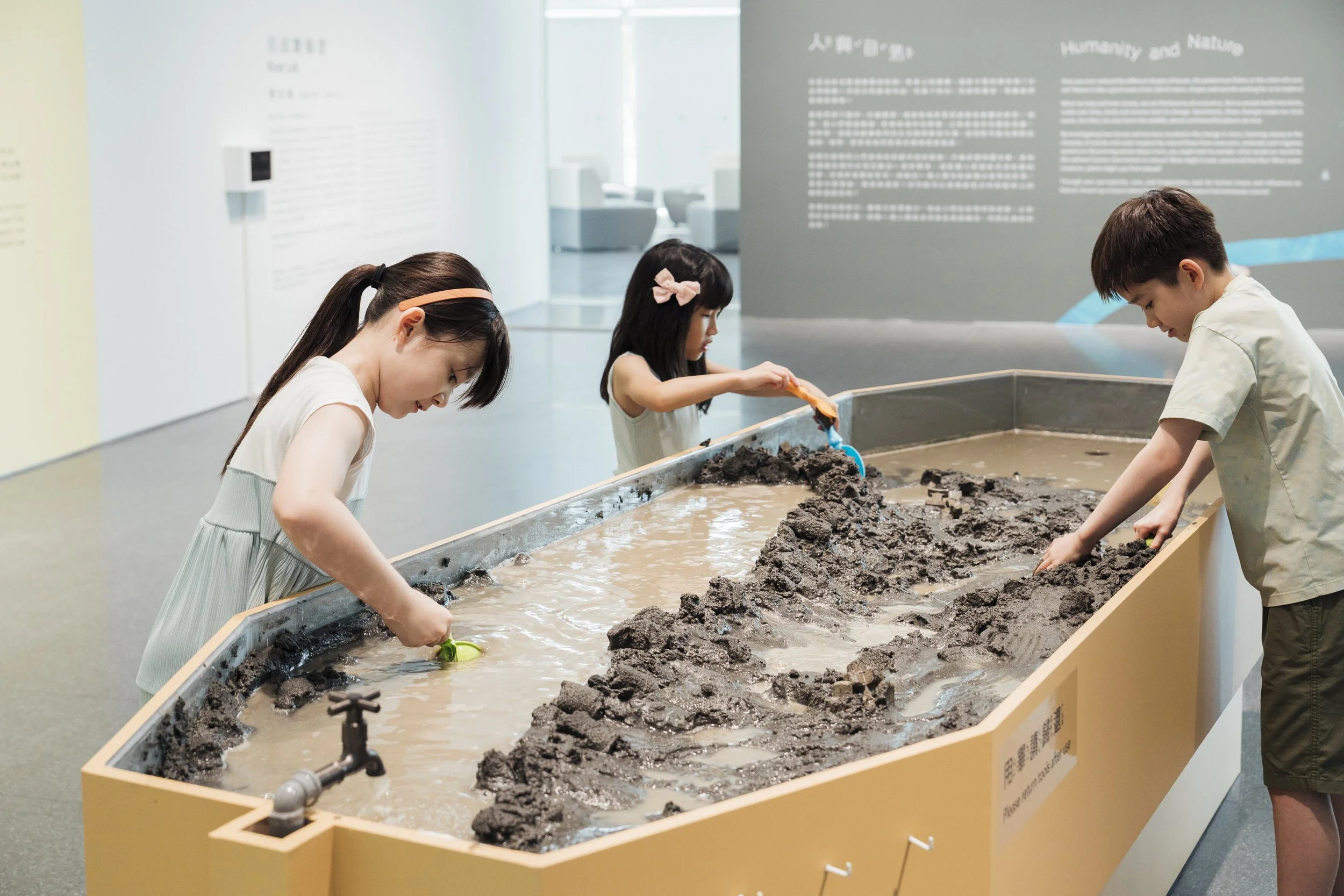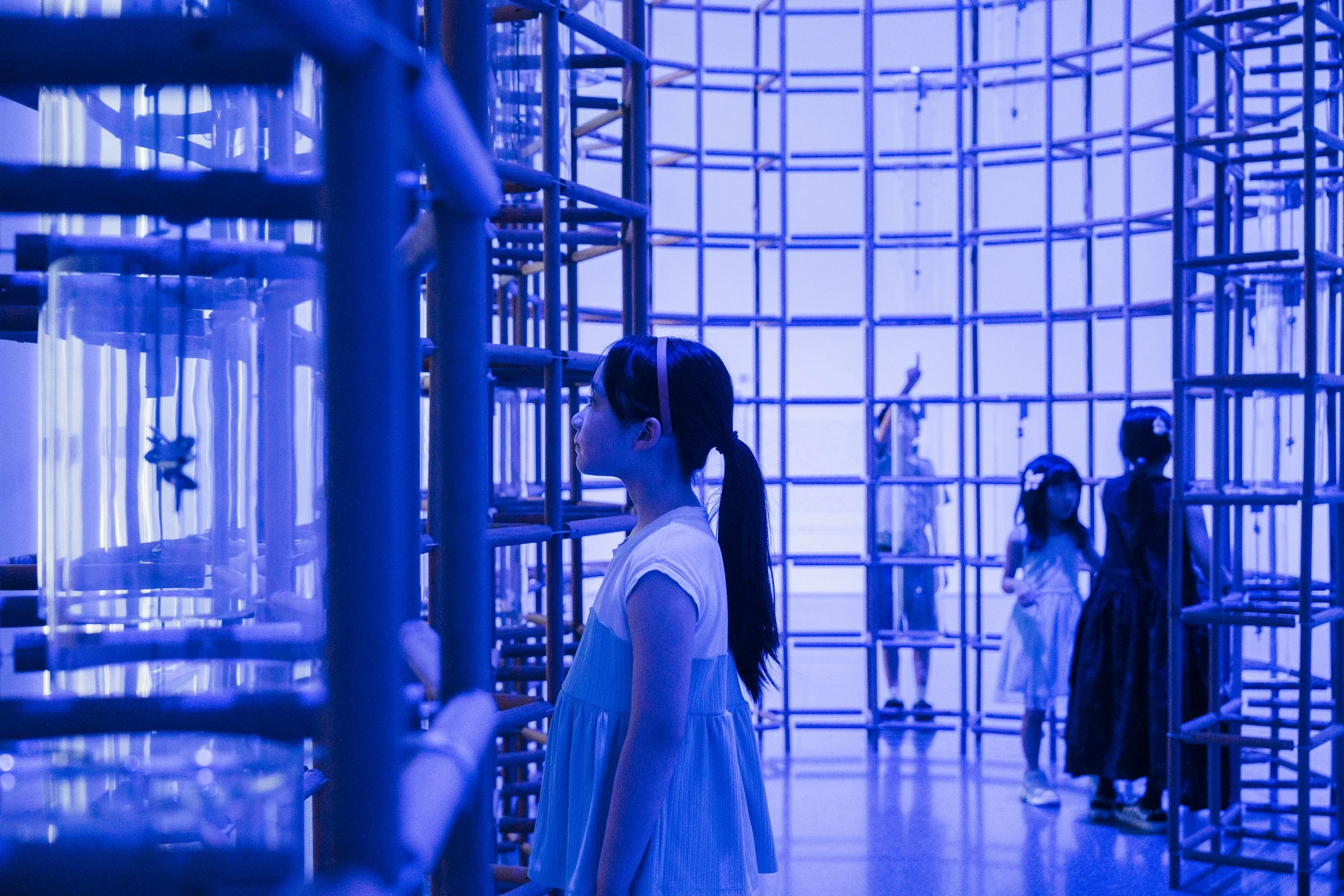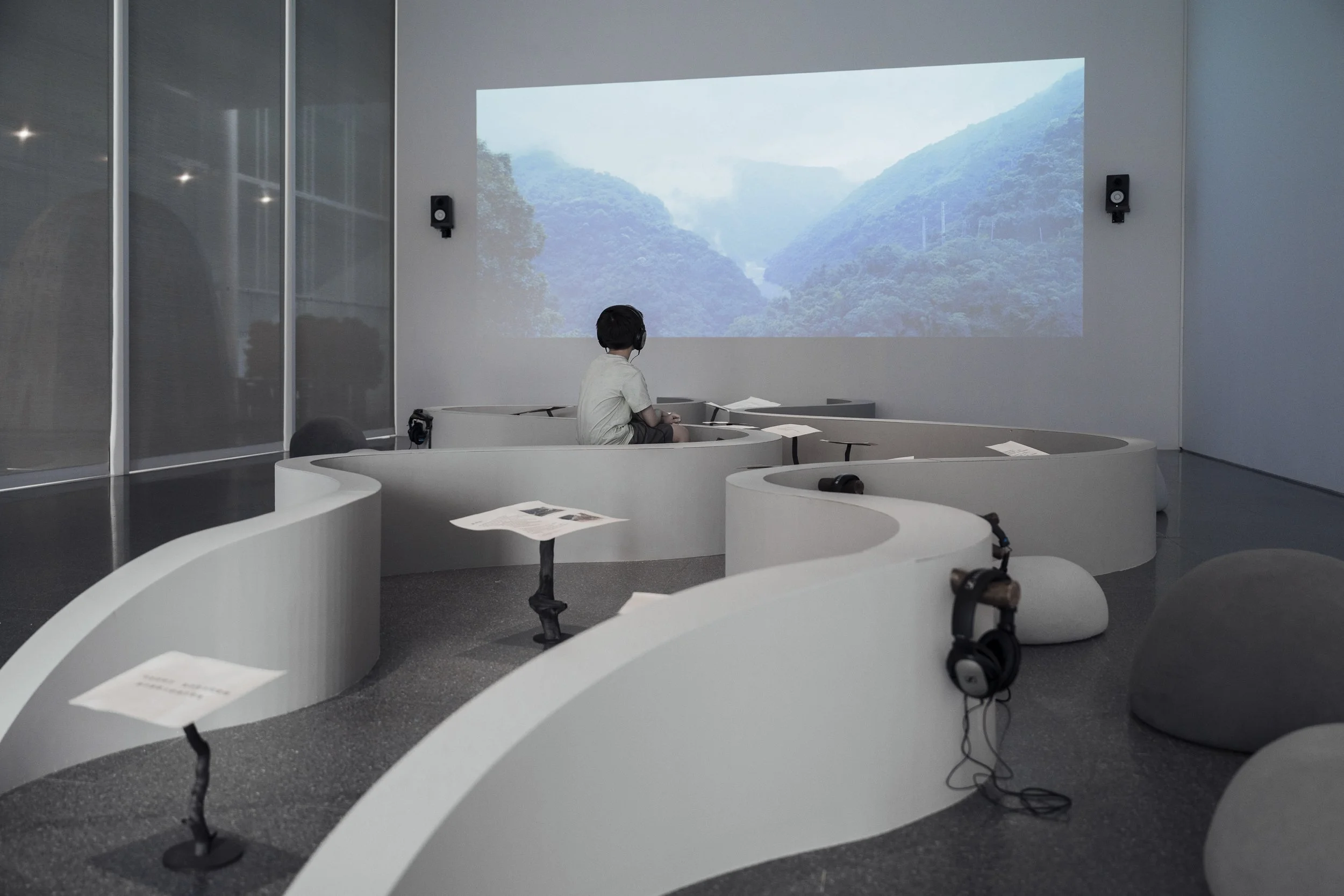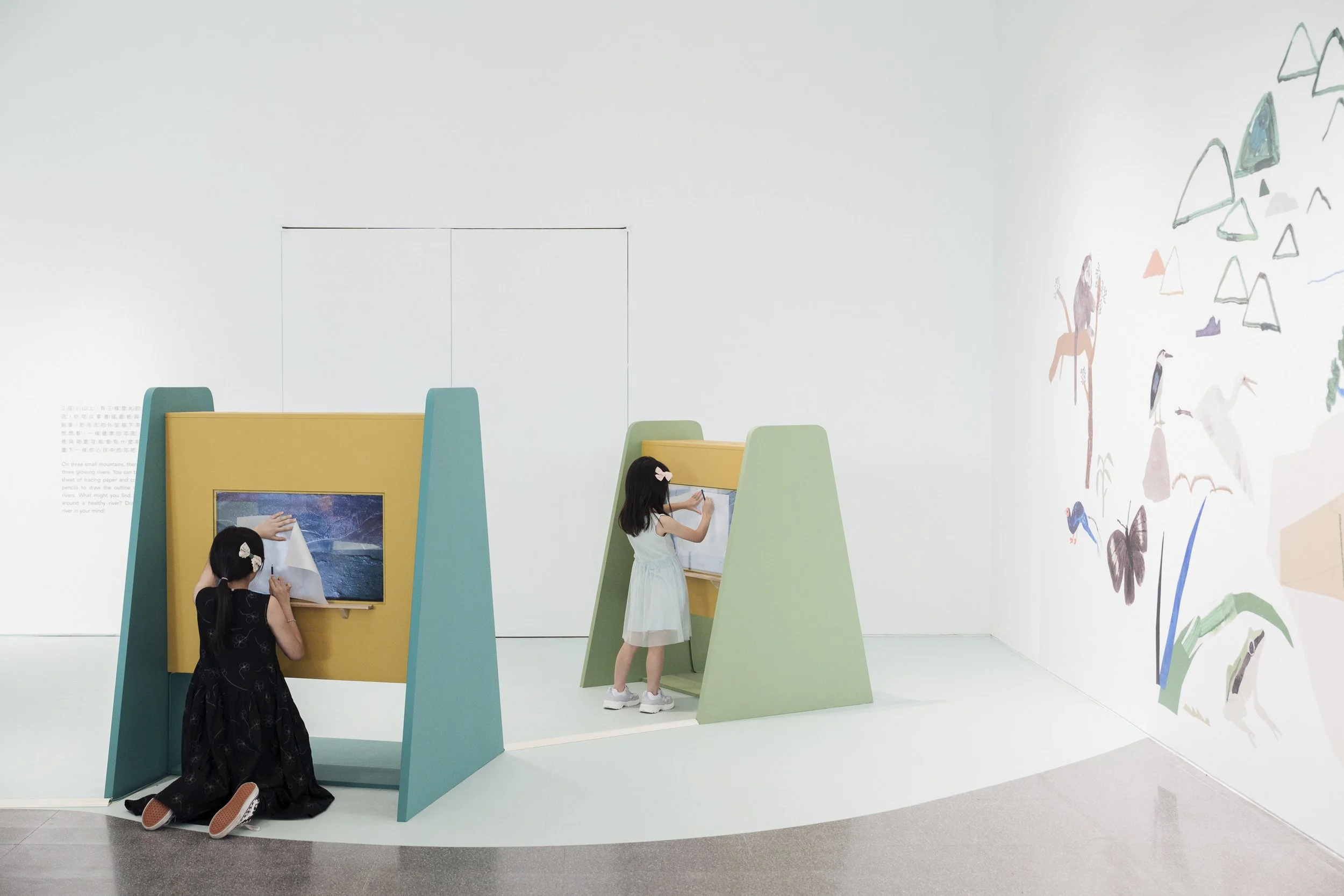‘When Art Meets Nature’: A Joint Children’s Art Exhibition
Taoyuan Museum of Fine Arts and National Gallery Singapore
Installation view of Soh Ee Shaun, Peace Forest, 2025, digital print, readymade, sound, dimensions variable. Image courtesy of Taoyuan Museum of Fine Arts.
Taoyuan Museum of Fine Arts (TMoFA) and National Gallery Singapore (NGS) have come together to co-curate When Art Meets Nature, a children’s art exhibition. Held at the Taoyuan Children’s Art Center, the exhibition will run from now until 9 November 2025. It is curated by Peng Hsiung, the in-house curator at TMoFA, in collaboration with Annabelle Tan, Elaine Chan, and Wang Tingting, the learning curators from NGS. Focusing on the natural environment, ecology, and sustainability, five artists whose past practices have engaged with themes of nature were selected to create a variety of immersive and multi-sensory works suitable for families to engage with. The artists are Zul Mahmod, Tan Zi Xi, and Soh Ee Shaun from Singapore, as well as Chen Po-I, and Yenting Hsu from Taiwan.
This collaboration between TMoFA and NGS marks the first of its kind since the inauguration of the Taoyuan Children’s Art Center in April 2024. The first contact between the two museums occurred in 2022, when TMoFA invited Annabelle Tan, Deputy Director of Learning and Outreach at National Gallery Singapore, as a speaker for their international symposium on children’s art education in museum contexts. As the two institutions also share remarkable synergies in their shared mission to create meaningful art experience for young audiences, with TMoFA’s establishment of the Taoyuan Children’s Art Center, and NGS’ Keppel Centre for Art Education, working together became both a natural and necessary transition. “This collaboration thus marks a significant milestone in our efforts to foster cross-cultural exchange in children’s art education between Taiwan and Singapore,” Peng remarks. “We hope this partnership will pave the way for continued learning, dialogue, and collaboration between our institutions.” In addition to online communications that enabled their meetings, the Singapore artists and NGS curators were invited to visit Taoyuan earlier this January. The trip provided the artists with important first-hand experiences of the exhibition spaces, as well as the settings from which Taoyuan Children’s Art Center was instituted, with their observations inspiring the final elements of their artworks.
Installation view of One, Two, Three Landscapes Learning Station, featuring a reproduction of Seascape (1966) by Choo Keng Kwang, Foo Chee San, Lim Mu Hue, Lim Yew Kuan, See Cheen Tee, and Tan Tee Chie from the National Gallery Singapore Collection. Image courtesy of Taoyuan Museum of Fine Arts.
In the spirit of opening up exchange on the topic of children’s art education, a special forum titled “Nature Class at an Art Museum: How Art Inspires Children’s Ecological Awareness” was held ahead of the exhibition opening on 29 June. The event brought together the curatorial teams and education professionals from both museums, alongside the five participating artists to share about their curatorial and educational practices. Highlights from the forum included discussions on how art and education can intersect in the context of exhibition-making for children, as well as further explorations on how art experiences can support social-emotional learning and bonding between children and their families, caregivers, and educators. Adding a nuanced layer to the children-centered discourse was also a conversation about the role of locally inspired artworks situated within internationally co-curated exhibitions, and the creative processes of the artists which were shaped by their local landscapes and communities.
Installation view of Tan Zi Xi, The Invisible Forests, 2025, wood installation, digital print, dimensions variable. Image courtesy of Taoyuan Museum of Fine Arts.
Installation view of Chen Po-I, River Lab, 2025, digital photography print on PVC, water, sand, metal, pump, wood installation, tempered glass, dimensions variable. Image courtesy of Taoyuan Museum of Fine Arts.
Beyond the forum, these talking points are also made visible in the exhibition itself. Educating a younger generation about environmental concerns is a key theme that runs through the space. For instance, Tan Zi Xi’s installation, The Invisible Forests (2025), features three dome-shaped spaces of discovery. With effective use of a sensorial, visual language that plays with shapes and colours, the work allows young viewers to easily grasp the consequences of climate change, and the complexities of ecological diversities and habitats. Through similar means of a sensory, interactive installation, Chen Po-I’s work, River Lab (2025), explores how hydrological change is deeply entangled with human activity. This educational project draws from research and photographic fieldwork conducted along Taiwan’s Dahan River, deftly combining scientific investigation with landscape photography to encourage reflection on the broader impact of human interventions on nature.
Installation view of Zul Mahmod, Beneath the Silence, a Pulse, 2025, 4-channel sound system, wood, metal, acrylic, vibrator, microcontroller, 300×700×300 cm. Image courtesy of Taoyuan Museum of Fine Arts.
Several works also created restorative spaces for families to connect with each other through play and rest in nature. In Peace Forest (2025), Soh Ee Shaun transformed an independent gallery space facing the nearby Chintan Park into a forest of playful imagination. Inspired by moments of nature with his son at Bukit Timah Nature Reserve in Singapore, the work invites visitors to engage in active play, exploration, and dialogue with each other about endangered species from both Singapore and Taiwan, nurturing a collective care for the natural world. Moving from forest to water landscapes, sound artist Zul Mahmod takes Taoyuan’s reservoirs and its network of irrigation canals as a point of departure for his work Beneath Silence, a Pulse (2025). The large-scale immersive sound installation envelops audiences in a tranquil, submerged sonic environment, leading children and their families to attenuate their senses to the quiet rhythms of life.
Installation view of Yenting Hsu, Where the River Runs, 2025, wood installation, document, video, and sound, dimensions variable. Image courtesy of Taoyuan Museum of Fine Arts.
With the exhibition situated in Taoyuan, the works from both Taiwanese artists are deeply connected to the cultural and ecological context of the city. In particular, Yenting Hsu’s work, Where the River Runs, weaves together sound, storytelling, and local field research to introduce children to indigenous ways and wisdoms of living in harmony with nature. Incorporating both video and sound, her work draws from extensive fieldwork and interviews she conducted with indigenous communities along the river. Peng affirms this. He says, “It is through these stories that we learn the traditional methods of coexisting with nature, with its valuable insights into sustainable alternatives rooted in indigenous knowledge.” He elaborates, “These stories in turn find new audiences in the museum context, generating new resonances with narratives from other places, eventually creating a possibility of dialogue across borders.”
Installation view of Chen Po-I, River Lab, 2025, digital photography print on PVC, water, sand, metal, pump, wood installation, tempered glass, dimensions variable. Image courtesy of Taoyuan Museum of Fine Arts.
Conversation, learning together, and encouraging new perspectives lie at the heart of this major exhibition. Tan explains, “Young visitors are encouraged to explore contemporary topics in ways that are imaginative, meaningful, and emotionally resonant. Through art, children, families, and educators can explore new ideas, spark imagination, and have conversations—ultimately fostering a deeper appreciation of nature.” Peng echoes Tan’s sentiments. He adds, “Each artwork reflects the artist’s personal response to the world around them, shaped by ecological thinking and creative expression.” In particular, Peng wishes for each visitor to carve their own unique journey and leave with a lasting impression. He says, “We hope children will come to appreciate the vibrant colours, textures, and visual language of flora and fauna—developing not only aesthetic sensibility but also a deeper attentiveness to the natural world.”
These experiences do not end with the exhibition. Extending the knowledge presented through the artworks are a series of parent-child outreach programmes that will take place throughout the exhibition period. These activities are designed to foster a deeper connection between nature and art through active participation and creation. They include hands-on activities such as textile-making, guided walks, co-creative workshops, and picture book storytelling sessions. TMoFA and NGS are also currently working together on a potential plan to present a selection of works from When Art Meets Nature at the Keppel Centre for Art Education in National Gallery Singapore in early 2026, with plans to be announced by both institutions at a later date.
This article is presented in partnership with Taoyuan Museum of Fine Arts.
When Art Meets Nature is open from 2 July to 9 November 2025 at the Taoyuan Children’s Art Center. For more information on the exhibition, click here. To visit the Taoyuan Museum of Fine Arts official website, click here. The Taoyuan Museum of Fine Arts is scheduled to officially open in 2027.

